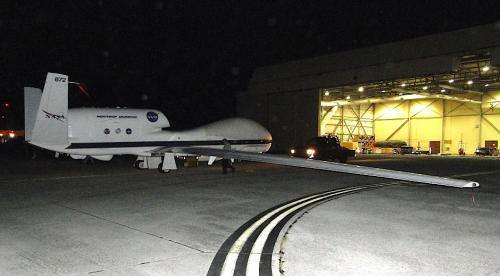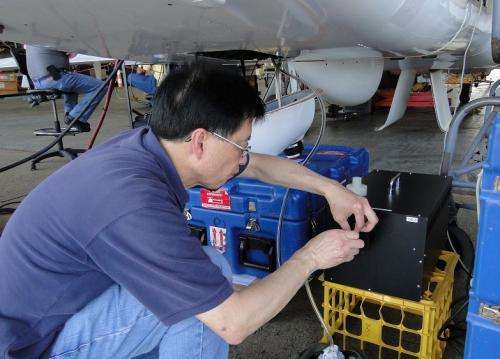NASA Completes First ATTREX Science Mission

NASA's Global Hawk No. 872 completed a 17.5-hour science flight Feb. 14, it's first for the 2014 Airborne Tropical Tropopause Experiment (ATTREX) mission.
The unmanned aircraft, carrying a suite of specialized instruments, flew from Andersen Air Force Base on the island of Guam. Objectives were to sample vertical distribution of the Western Pacific tropical tropopause layer trace gases, water vapor and clouds. In situ data was gathered about cirrus clouds in the cold tropopause regions surrounding Guam. Water vapor concentration was also measured in this area east-southeast of Guam.
To gather these measurements, the aircraft flew an arc first to the northwest of Guam, then reversed course and traveled south and back to the west.

The NASA Global Hawk research aircraft is in the Western Pacific region on the ATTREX mission to track changes in the upper atmosphere and help researchers understand how these changes affect Earth's climate.
Provided by NASA



















